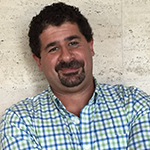By Daniel Marano
At Gale and Cengage Learning, we conduct hundreds of user studies in any given year. In each study, we talk to and observe dozens of users as we iteratively design or modify our resources and tools. We have been doing and learning from this user-centered design approach for years now, and have a centralized user experience department that conducts this research for the entire organization.
What this traditional form of user-centered design leaves out, however, are certain types of longitudinal data, and the evolving habits and technologies that a student moves through over time. That’s why last year we launched a novel new research study called 21 Voices.
In 21 Voices, our product and UX team members shadow twenty-one college students over the course of a two- or four-year degree, and in the critical years following. Every week, they send us blog posts, photos and videos. Every month we talk with them by phone. Every quarter we visit them on campus for a day. And once a year, we bring them together for an in-person summit. We publish our findings internally for the use of product development teams within Gale and the entire Cengage Learning organization.
The students are drawn from all over the country, and represent various stages of life and learning. Today, a year after launching 21 Voices, our learnings are helping drive product design, generating myriad hypotheses that we test with more traditional methods like surveys and interviews. 21 Voices has pointed us to the importance of video in the research context. It has helped us better understand how design elements like tiles and cards – so prevalent in mobile apps – work in an education or library context. And it has helped us better understand how to link reference content and primary sources to support classroom learning.
Oftentimes, we take an observation from 21 Voices and then deploy a survey to test it. However, sometimes 21 Voices can serve to further validate or expand upon conclusions drawn elsewhere. For example, we have learned a lot about how students expect to browse and share content, rather than search for it in a traditional search box. Through the program we are constantly learning from these students, in a relationship that works like mentorship in reverse.
Not only does this input help keep us on our game, but it helps us spot new developments much more quickly: we see how today’s students see everything coming from Google as if it is all in one big database; we see how students are shifting from big public social media sites to more private ones. These shifts pose both threats and opportunities. Seeing them early gives us the opportunity better understand and capitalize on them.
The notion of a reverse mentorship is nothing new, and has been championed in recent decades by business thought leaders like GE’s Jack Welch, and more recently, by Tom Kelley, innovation guru and partner at renowned design firm IDEO. Nowhere does this concept seem more valuable as in the education space today where getting the product design right plays such a large role in determining its fate in the market.
[alert-info]
 About the Author
About the Author
Dan Marano is the Director of User Experience at Gale | Cengage. He holds a Masters in Information Economics and Incentive Design from the University of Michigan, and lives in Ann Arbor, MI where he and his kids are enthusiastic patrons at most of the branches of their local AADL libraries.
[/alert-info]Jordan Ανδρικά • Summer SALE έως -50%

